- The Benefits of Extending Cucumber Fruiting
- The Importance of Extending Cucumber Fruiting
- Benefits of Extended Cucumber Fruiting
- Techniques for Extending Cucumber Fruiting
- Conclusion
- Choosing the Right Cucumber Varieties for Autumn
- How to Prepare Your Garden for Autumn Cucumber Growth
- Tips for Proper Cucumber Care and Maintenance
- 1. Planting
- 2. Watering
- 3. Trellising
- 4. Fertilizing
- 5. Pest and Disease Control
- 6. Harvesting
- 7. Crop Rotation
- Protecting Cucumber Plants from Autumn Weather
- 1. Covering the plants
- 2. Mulching
- 3. Watering
- 4. Wind protection
- 5. Harvesting ripe cucumbers
- 6. Disease prevention
- Harvesting and Storing Autumn Cucumbers
- Harvesting Cucumbers
- Storing Cucumbers
- Enjoying Autumn Cucumbers
- Recipes and Ideas for Using Autumn Cucumbers
- Cucumber Salad
- Cucumber Salsa
- Cucumber Sandwiches
- Pickled Cucumbers
- Cucumber Smoothie
- Cucumber and Avocado Salad
- “Question-Answer”
- What is the best way to extend cucumber fruiting through the autumn?
- Can I grow cucumbers indoors during the autumn?
- What are some common problems that can prevent cucumber fruiting in the autumn?
- How often should I water my cucumber plants in the autumn?
- Is it possible to grow cucumbers from seeds in the autumn?
- What are some tips for maximizing cucumber fruiting in the autumn?
- “Video” Your Cucumbers Will LOVE You For This: 5 Things To Do NOW!
Extending cucumber fruiting throughout the autumn can be a challenging task for many gardeners. As the summer months come to a close, the cooler temperatures and shorter days can make it difficult for cucumbers to continue producing fruit. However, with the right techniques and care, it is possible to enjoy a bountiful cucumber harvest well into the fall.
One of the key factors in extending cucumber fruiting is providing the plants with the ideal growing conditions. Cucumbers thrive in warm and sunny environments, so make sure to choose a sunny spot in your garden for planting. Additionally, cucumbers require well-drained soil and regular watering to keep them healthy and productive.
To give your cucumbers the best chance of continued fruiting, it is important to provide them with proper support. Cucumber vines can quickly become unruly if left to sprawl on the ground, which can hinder fruit production. Consider using trellises or cages to support the vines and encourage upward growth. This not only maximizes the use of vertical space but also improves air circulation around the plants, reducing the risk of diseases.
Another crucial aspect of extending cucumber fruiting is regular pruning and maintenance. Remove any dead or diseased leaves to prevent the spread of diseases and improve air circulation. Additionally, by pruning away excessive foliage, you can direct the plant’s energy towards fruit production. Be careful not to remove too many leaves or cut off flowering branches, as this can impact fruiting.
Proper fertilization is also essential for extending cucumber fruiting. Use a balanced fertilizer to provide the necessary nutrients for the plants. Remember to follow the instructions on the fertilizer package and avoid over-fertilization, as this can lead to excessive foliage growth instead of fruit production. Regularly check the soil’s pH levels and adjust if necessary, as cucumbers prefer slightly acidic soil.
Finally, keep an eye out for pests and diseases that can affect cucumber plants. Common cucumber pests include aphids, cucumber beetles, and spider mites. Regularly inspect the plants for signs of damage and take appropriate measures to control infestations. Additionally, fungal diseases such as powdery mildew can be a problem in cooler weather. Monitor the plants for any signs of disease and promptly treat them with appropriate fungicides if necessary.
By following these tips and techniques, you can successfully extend cucumber fruiting through the autumn and enjoy a continuous supply of fresh, homegrown cucumbers well into the cooler months. With proper care and attention, your cucumbers can thrive and continue producing delicious fruits even as the weather starts to change.
The Benefits of Extending Cucumber Fruiting

Growing cucumbers can be a rewarding experience, especially when you are able to extend their fruiting period into the autumn months. Here are some of the key benefits of extending cucumber fruiting:
- Continued Harvest: By extending cucumber fruiting, you can continue to harvest fresh cucumbers well into the autumn, even after the regular growing season has ended. This means you can enjoy the taste of homegrown cucumbers for longer.
- Maximize Yield: Extending cucumber fruiting allows you to maximize your yield from each plant. Cucumbers are known for their high productivity, and by prolonging their fruiting period, you can ensure that you get the most out of each plant.
- Economical: Growing your own cucumbers and extending their fruiting period can be a cost-effective way to enjoy this delicious vegetable. You can save money by avoiding the need to buy cucumbers from the grocery store during the extended growing season.
- Higher Nutritional Value: Homegrown cucumbers that are allowed to fully ripen on the vine have higher nutritional value compared to store-bought cucumbers that are picked prematurely. By extending cucumber fruiting, you can ensure that you are consuming cucumbers at their peak nutritional content.
By implementing techniques to extend cucumber fruiting, such as providing adequate support, regular pruning, and balanced watering and fertilization, you can enjoy all these benefits and more. Whether you are a seasoned gardener or a beginner, extending cucumber fruiting can be a rewarding endeavor that yields delicious cucumbers throughout the autumn season.
The Importance of Extending Cucumber Fruiting
Growing cucumbers can be a rewarding experience for any gardener. However, the traditional cucumber growing season is usually limited to the summer months, leaving many gardeners without fresh cucumbers during the autumn. Extending cucumber fruiting is therefore important for those who want to enjoy a prolonged harvest and continue to reap the benefits of their cucumber plants.
Benefits of Extended Cucumber Fruiting
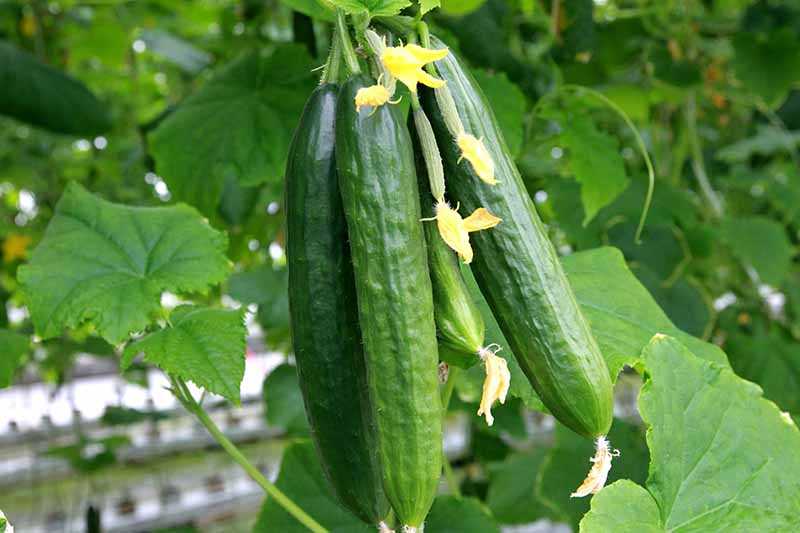
- Increased Yield: By extending cucumber fruiting, gardeners can ensure a higher yield of fresh cucumbers throughout the autumn. This allows for more cucumber dishes to be enjoyed and shared with family and friends.
- Cost Savings: With extended cucumber fruiting, gardeners can save money by not having to purchase cucumbers from the market during the off-season. This makes gardening more cost-effective and can contribute to overall food budget savings.
- Continuous Harvest: Extending cucumber fruiting means that gardeners can enjoy a continuous harvest rather than a one-time yield. This allows for a steady supply of fresh cucumbers for salads, pickling, or other culinary uses.
- Seasonal Variety: By extending cucumber fruiting into autumn, gardeners can add a touch of freshness and variety to their autumn meal planning. Cucumbers can be a refreshing addition to soups, stews, and other autumn recipes that traditionally feature heartier ingredients.
Techniques for Extending Cucumber Fruiting
There are several techniques that gardeners can employ to extend cucumber fruiting into the autumn months:
- Proper Plant Selection: Choose cucumber varieties that are known for their ability to produce fruit in cooler temperatures. Look for varieties labeled as “autumn” or “fall” cucumbers.
- Protective Covers: Use row covers or cloches to protect cucumber plants from cool temperatures and frost. These covers can create a mini-greenhouse effect, trapping heat around the plants and extending the growing season.
- Proper Watering and Fertilizing: Ensure that cucumber plants receive adequate water and fertilizer to promote healthy growth and fruit production. Regular watering and the application of a balanced fertilizer will help provide optimal conditions for the plants to produce fruit throughout the autumn.
- Pruning and Training: Prune cucumber plants to remove any dead or dying foliage and to control the plant’s growth. Training the vines to grow vertically can also help maximize space and increase airflow, reducing the risk of disease and promoting further fruit production.
Conclusion
Extending cucumber fruiting is essential for gardeners who want to enjoy fresh cucumbers during the autumn months. By utilizing proper techniques and selecting appropriate cucumber varieties, gardeners can ensure a continuous harvest and reap the numerous benefits of extending cucumber fruiting.
Choosing the Right Cucumber Varieties for Autumn
When it comes to extending the cucumber fruiting season into the autumn, selecting the right cucumber varieties is crucial. While many cucumber varieties are well-suited for summer growing conditions, not all of them are suitable for the lower temperatures and shorter daylight hours of autumn.
To ensure a successful cucumber harvest in the autumn, consider the following criteria when choosing cucumber varieties:
- Cold Tolerance: Look for cucumber varieties that are specifically bred for cold tolerance. These varieties are more likely to thrive in cooler temperatures and continue fruiting in the autumn. Some popular cold-tolerant cucumber varieties include ‘Suyo Long’ and ‘Marketmore’.
- Days to Maturity: Pay attention to the number of days to maturity listed for each cucumber variety. Since the daylight hours are shorter in autumn, it is important to select varieties with a shorter maturity period. This will increase the chances of harvesting cucumbers before the first frost. Look for cucumber varieties with a maturity period of 60-70 days or less.
- Vine Type: Consider the vine type of the cucumber variety. Compact bush varieties or dwarf varieties are often better suited for autumn growing as they require less space and can be grown in containers. These varieties tend to have a faster maturity period and are well-suited for colder temperatures. Examples of cucumber varieties with a compact vine type include ‘Patio Pik’ and ‘Bush Champion’.
Additionally, it is also a good idea to consult with local gardeners or seed suppliers to get recommendations on cucumber varieties that have been successful in your specific region during the autumn season. Their knowledge and experience can help guide you towards the best cucumber varieties for your growing conditions.
By carefully selecting cucumber varieties that are cold-tolerant, have a shorter maturity period, and exhibit a suitable vine type, you can increase your chances of successfully extending the cucumber fruiting season through the autumn months.
How to Prepare Your Garden for Autumn Cucumber Growth
Preparing your garden for autumn cucumber growth is essential to ensure a successful and bountiful harvest. Here are some steps to follow:
Remove any leftover plants from the summer season: Start by removing any remaining plants from the previous growing season. Clear out all the weeds, dead leaves, and debris to create a clean and healthy environment for your cucumbers to thrive.
Amend the soil: Test the soil to determine its pH level and nutritional content. Cucumbers prefer slightly acidic soil with a pH range between 6 and 6.8. If needed, amend the soil by adding organic matter, such as compost or well-rotted manure, to improve its fertility and drainage.
Provide support: Cucumbers are climbing plants that require support to grow vertically. Install trellises, stakes, or cages to support the cucumber vines and prevent them from sprawling on the ground. This will also help to increase air circulation and reduce the risk of diseases.
Apply mulch: Mulching around the cucumber plants helps to regulate soil temperature, conserve moisture, and suppress weed growth. Use organic mulch, such as straw or wood chips, and apply it in a thick layer around the base of the plants, taking care not to cover the stems.
Water regularly: Cucumbers require consistent moisture throughout the growing season, especially during hot and dry periods. Water the plants deeply and evenly, ensuring that the soil remains consistently moist but not waterlogged. Use a soaker hose or drip irrigation system to provide water directly to the plant’s roots.
Protect from frost: As autumn approaches, monitor the weather for any signs of frost. Cucumbers are susceptible to frost damage, so be prepared to cover the plants with a frost blanket or bring them indoors if necessary. Harvest any remaining cucumbers before the first frost to avoid losing the fruits.
By following these steps, you can prepare your garden for autumn cucumber growth and enjoy a prolonged harvest season. Remember to keep an eye on the weather and provide the necessary care to ensure your cucumber plants thrive throughout the autumn months.
Tips for Proper Cucumber Care and Maintenance
1. Planting
When planting cucumber seeds, make sure to choose a sunny location with well-drained soil. Cucumber plants thrive in full sun, so choose a spot that receives at least 6-8 hours of direct sunlight per day. Prepare the soil by adding organic matter, such as compost or aged manure, to improve its fertility and drainage.
Space cucumber plants about 12-18 inches apart to allow for proper air circulation and prevent the spread of diseases. Plant the seeds about 1 inch deep and water thoroughly after planting.
2. Watering
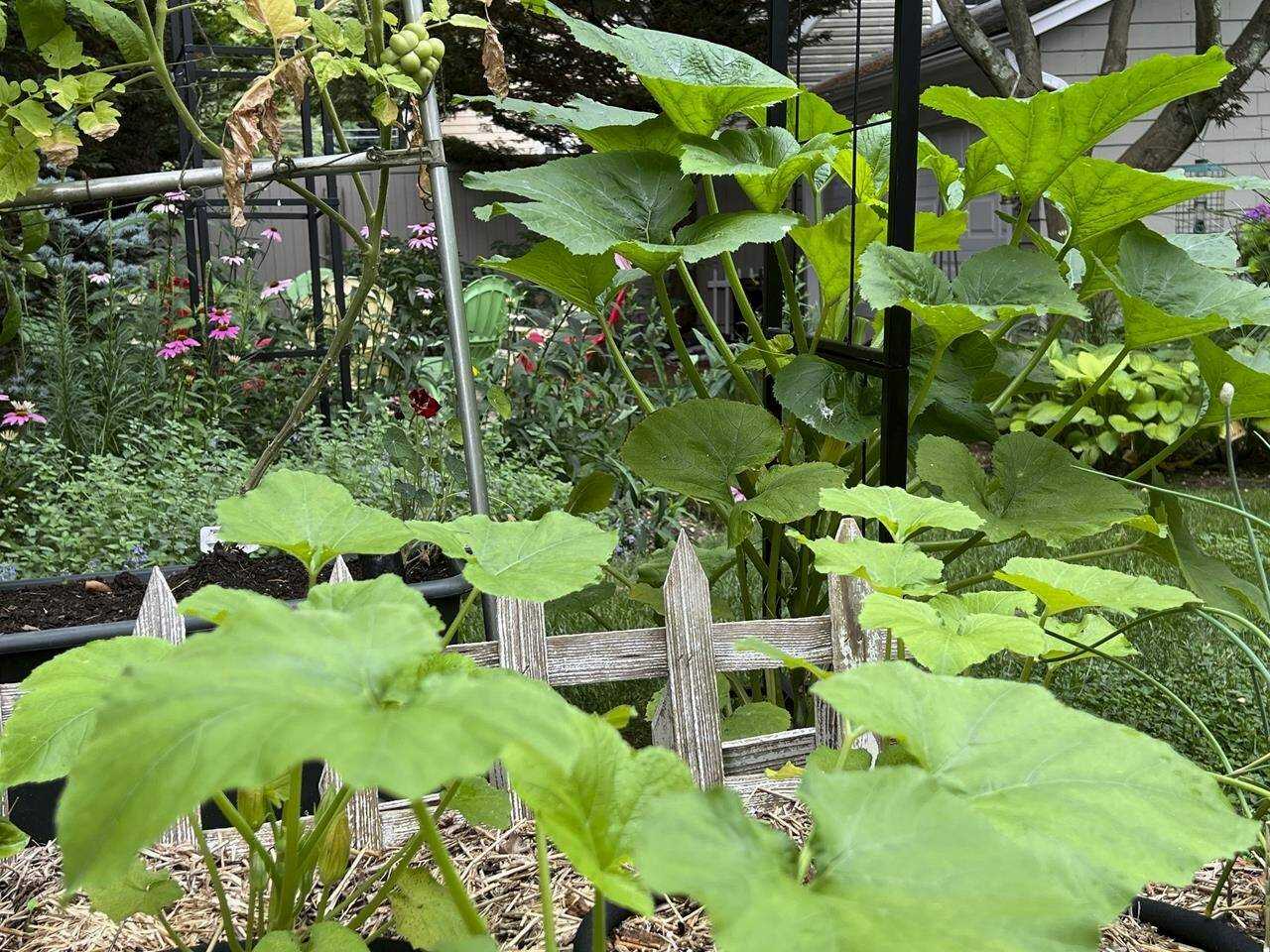
Cucumbers require consistent moisture to thrive, so it’s important to water them regularly. Keep the soil evenly moist but not waterlogged. Avoid overhead watering, as it can lead to the development of fungal diseases. Instead, water at the base of the plants to ensure the roots receive adequate moisture.
During hot and dry periods, you may need to water cucumbers more frequently. Be sure to water deeply to encourage the growth of deep roots.
3. Trellising
Trellising cucumbers not only saves garden space but also promotes better air circulation and helps control diseases. Use a sturdy trellis or fence to support the vine as it grows. As the cucumber plant grows, gently guide the vines onto the trellis to prevent them from sprawling on the ground.
Trellising also makes it easier to harvest cucumbers, as they will be more visible and accessible.
4. Fertilizing
Feed cucumber plants with a balanced fertilizer, such as a 10-10-10 or 14-14-14 formula, at planting time. Apply the fertilizer according to the package instructions, ensuring it is evenly distributed around the plants. Repeat the application every 4-6 weeks throughout the growing season.
Avoid over-fertilizing, as it can lead to excessive foliage growth and fewer fruits.
5. Pest and Disease Control
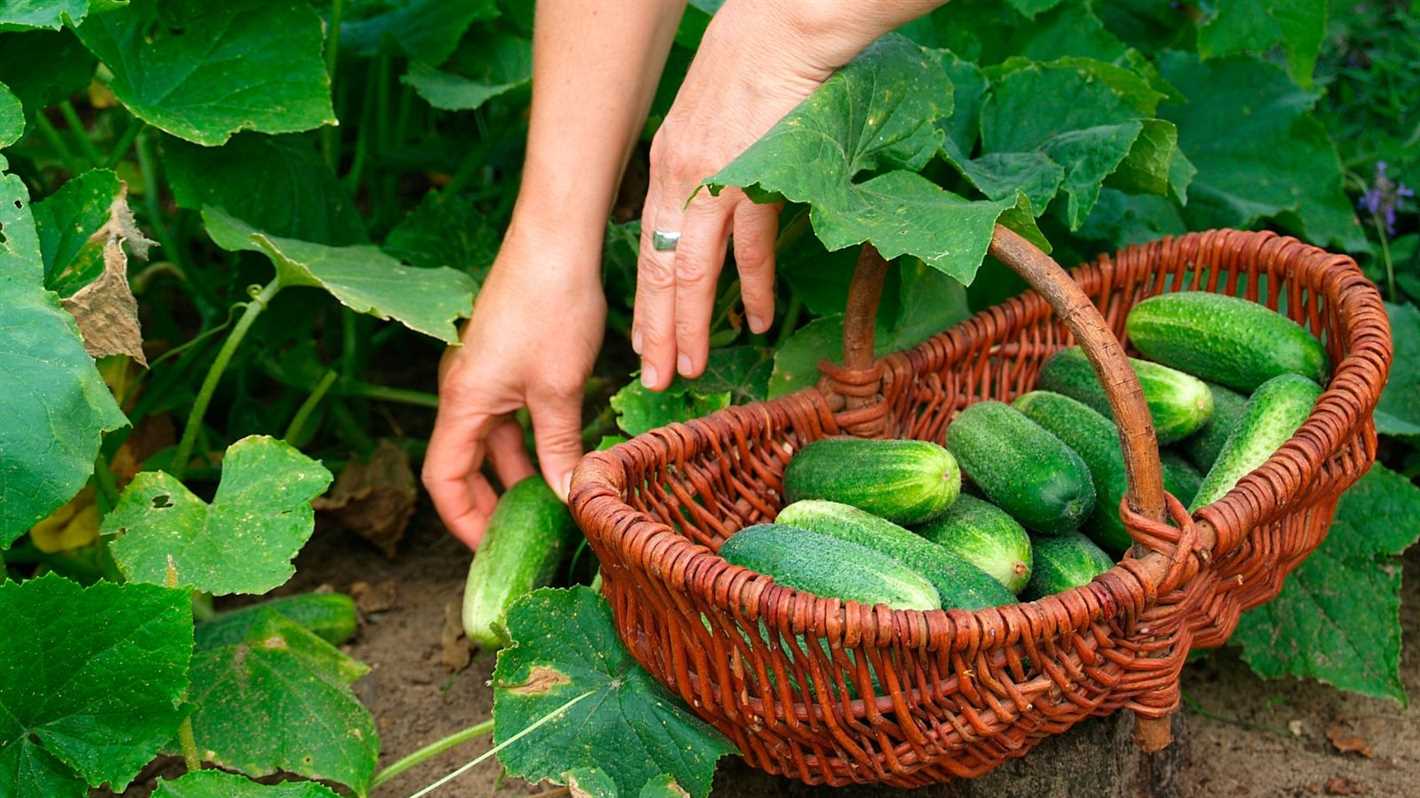
Monitor cucumber plants regularly for signs of pests, such as aphids and cucumber beetles, as well as common diseases like powdery mildew and bacterial wilt. Remove any infected or infested plants to prevent the spread of pests and diseases to healthy plants.
You can also use natural pest control methods, such as introducing beneficial insects like ladybugs or using organic insecticides, to keep pests at bay.
6. Harvesting
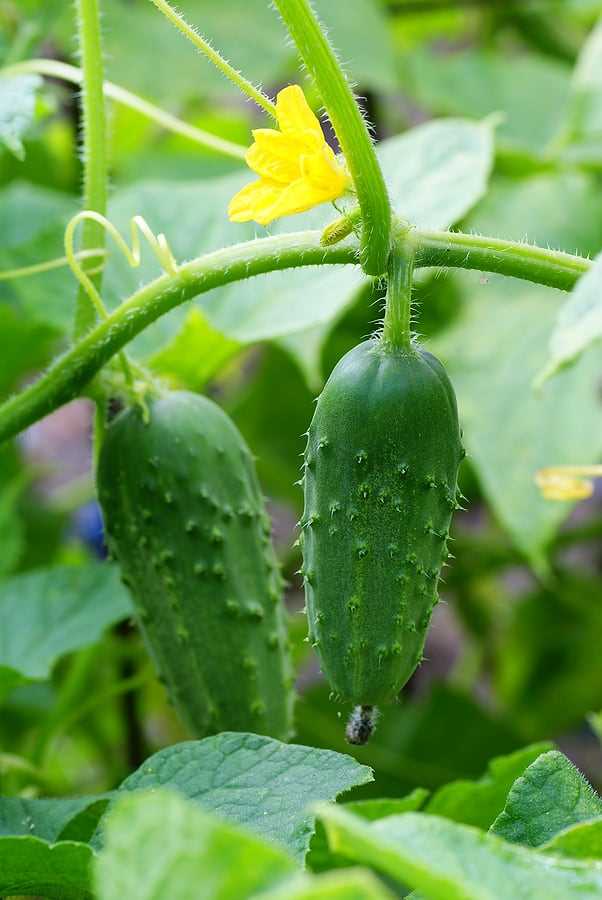
Harvest cucumbers when they reach the desired size. Most varieties are best picked when they are 6-8 inches long, although this may vary depending on the specific variety. Use a sharp knife or garden shears to cut the cucumber from the vine, taking care not to damage the plant.
Regularly harvesting cucumbers encourages the plant to produce more fruits.
7. Crop Rotation
To prevent the buildup of pests and diseases in the soil, practice crop rotation by planting cucumbers in a different area of the garden each year. Avoid planting cucumbers in the same spot for consecutive years, as this increases the risk of disease transmission and reduces plant vigor.
Rotate cucumber with other crops in the garden, such as tomatoes or beans, to maintain soil health and reduce the need for chemical interventions.
| Fertilizer | Rate |
|---|---|
| 10-10-10 formula | 1 pound per 100 square feet |
| 14-14-14 formula | 1 pound per 100 square feet |
Protecting Cucumber Plants from Autumn Weather
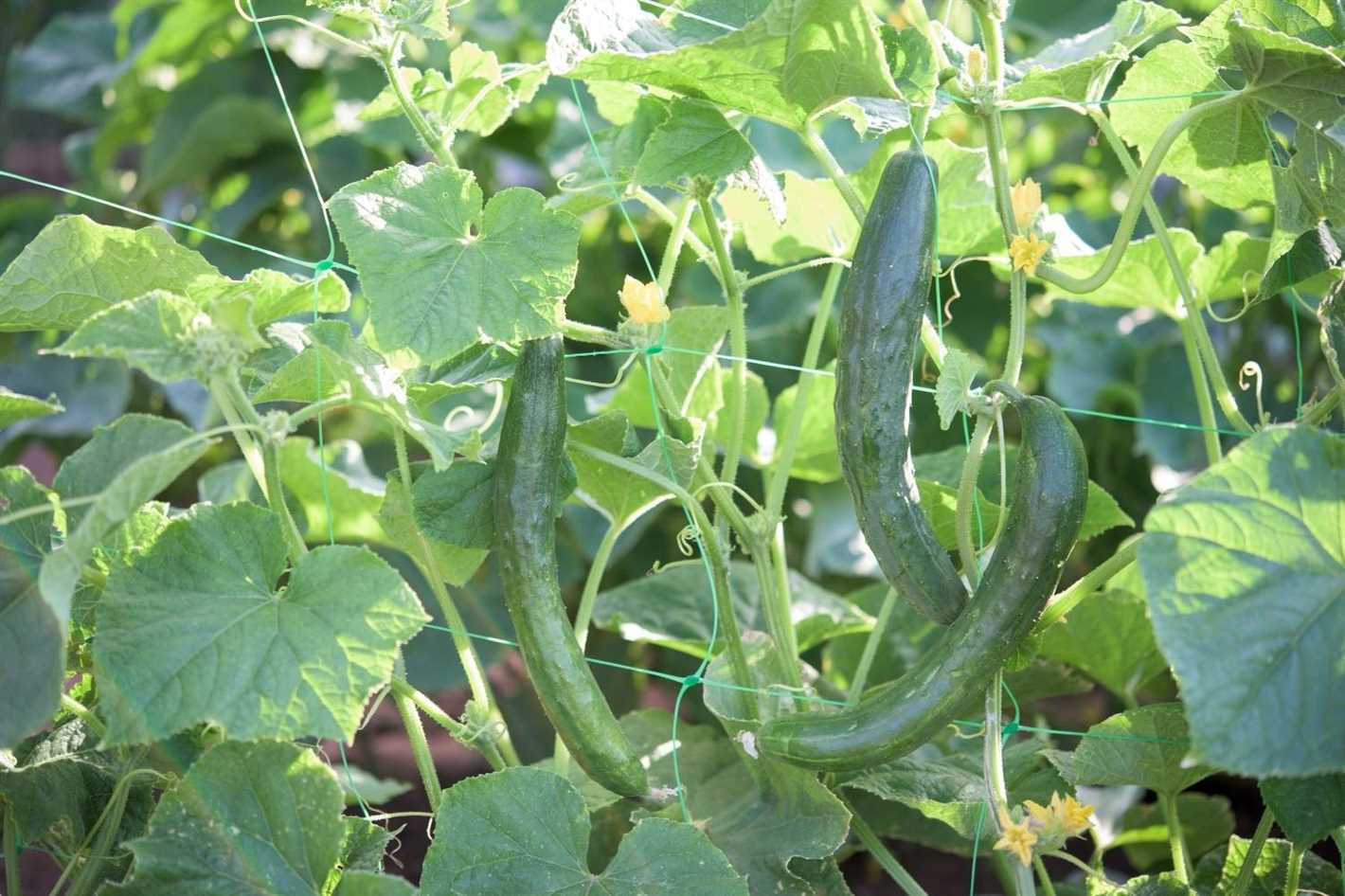
As autumn approaches, it is important to protect cucumber plants from the changing weather conditions in order to extend the fruiting season. Here are some tips to help protect your cucumber plants:
1. Covering the plants
Use row covers or cloches to create a protective barrier around the cucumber plants. This will help to keep the plants warm and shield them from the cold temperatures that can occur in autumn.
2. Mulching
Apply a layer of mulch around the cucumber plants to help retain moisture in the soil and regulate soil temperature. This will provide insulation for the plant roots and protect them from fluctuations in temperature.
3. Watering
Continue to water the cucumber plants regularly, paying attention to the soil moisture levels. Adequate watering will keep the plants healthy and help them withstand the dry and chilly conditions of autumn.
4. Wind protection
Install windbreaks around the cucumber plants to shield them from strong winds that can damage the delicate vines and leaves. This can be done by using trellises, fences, or tall plants as natural wind barriers.
5. Harvesting ripe cucumbers
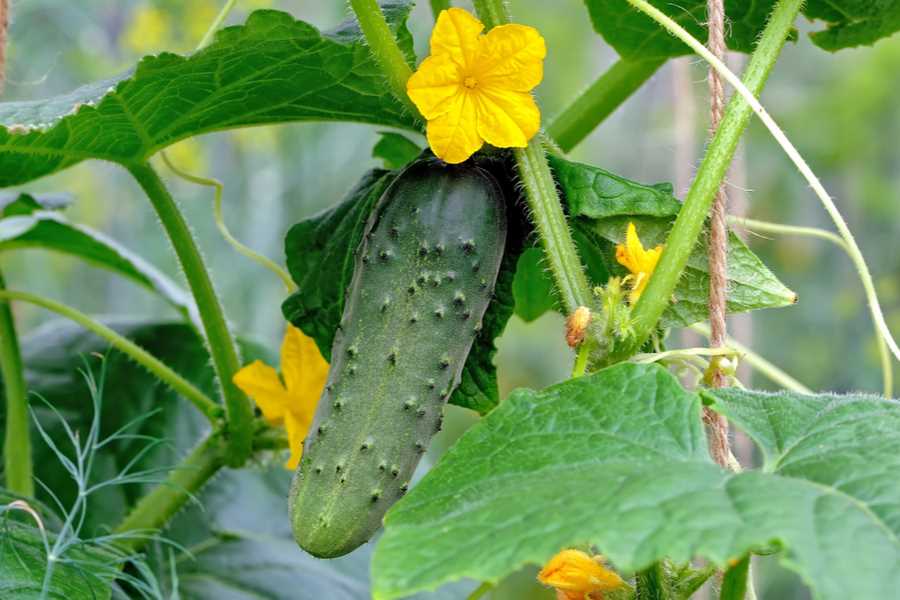
Regularly check the cucumber plants for ripe fruits and harvest them promptly. Leaving overripe cucumbers on the plant can signal to the plant that its fruiting period is over, resulting in a shorter overall fruiting season.
6. Disease prevention
Autumn weather can create favorable conditions for certain diseases that can affect cucumber plants. Monitor the plants closely for any signs of disease and take appropriate measures such as using fungicides or removing affected plants to prevent the spread of diseases.
By implementing these protective measures, you can help to safeguard your cucumber plants from the challenges posed by autumn weather and extend their fruiting season.
Harvesting and Storing Autumn Cucumbers
As autumn arrives, it is time to start harvesting your cucumbers. Here are some tips on when and how to harvest, as well as the best methods for storing your cucumbers to enjoy them throughout the season.
Harvesting Cucumbers
1. Timing:
- Start harvesting cucumbers when they reach the desired size. Most varieties are ready to harvest when they are about 6 to 8 inches long.
- Check the color of the cucumbers, as it can indicate ripeness. Most cucumbers are green, but some varieties turn yellow or orange when fully mature.
- Harvest cucumbers regularly, every 2 to 3 days, to encourage new growth and prevent them from becoming overripe and bitter.
2. Harvesting Technique:
- Hold the cucumber close to the stem and gently twist it off the vine. Do not pull or yank the cucumber, as it can damage the plant.
- Use a pair of garden shears or a sharp knife if the cucumbers are difficult to remove by twisting.
- Be careful not to bruise or injure the cucumber while harvesting, as it can reduce its shelf life.
Storing Cucumbers
1. Washing:
- Gently wash cucumbers with cool water to remove any dirt or debris.
- Do not soak cucumbers in water, as excessive moisture can cause them to spoil more quickly.
2. Drying:
- Pat dry cucumbers with a clean towel after washing to remove excess moisture.
- Allow cucumbers to air dry for a few minutes before storing them to prevent moisture buildup.
3. Storing Methods:
- Refrigerator storage: Place unwashed cucumbers in a perforated plastic bag or airtight container and store them in the vegetable drawer of the refrigerator. Cucumbers can stay fresh in the refrigerator for up to a week.
- Pickling: If you have an abundance of cucumbers, consider pickling them for long-term storage. Follow a trusted pickling recipe for best results.
4. Avoiding Spoilage:
- Avoid storing cucumbers near fruits that produce ethylene, such as apples, bananas, and melons, as it can cause cucumbers to ripen and spoil faster.
- Regularly check stored cucumbers for any signs of spoilage, such as mold or soft spots, and discard any cucumbers that are no longer fresh.
Enjoying Autumn Cucumbers
Autumn cucumbers can be enjoyed in various recipes, such as salads, sandwiches, and pickles. Their fresh and crisp texture adds a refreshing flavor to meals. Harvest cucumbers at their peak ripeness and store them properly to enjoy their delicious taste throughout the autumn season.
Recipes and Ideas for Using Autumn Cucumbers
Cucumbers are a versatile vegetable that can be used in a variety of dishes. Here are some delicious recipes and creative ideas for using autumn cucumbers:
Cucumber Salad
A simple and refreshing cucumber salad is a perfect way to enjoy the crisp flavor of autumn cucumbers. Thinly slice the cucumbers and toss them in a dressing made with olive oil, lemon juice, salt, and pepper. Add fresh herbs such as dill or mint for extra flavor. Serve chilled.
Cucumber Salsa
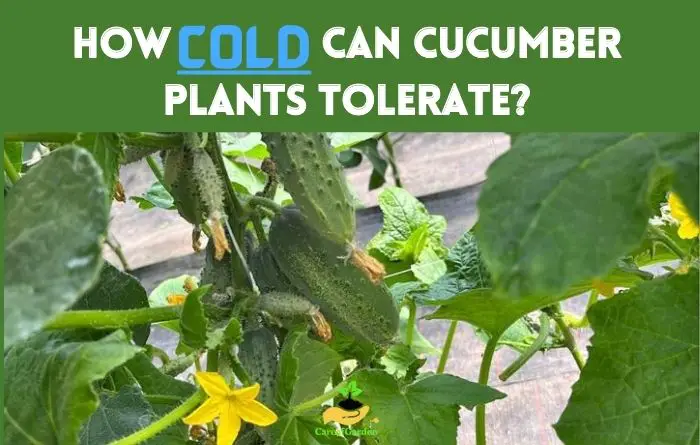
Add a unique twist to your salsa by incorporating fresh cucumbers. Dice the cucumbers and mix them with tomatoes, onions, cilantro, lime juice, and jalapenos. This cucumber salsa is a great appetizer or topping for tacos and grilled meats.
Cucumber Sandwiches
Take advantage of the crisp texture of autumn cucumbers by making cucumber sandwiches. Spread cream cheese on a slice of bread and layer thinly sliced cucumbers on top. Add a sprinkle of salt and pepper for extra taste. Cut into bite-sized pieces for a delightful snack or party appetizer.
Pickled Cucumbers
Preserve the flavor of autumn cucumbers by pickling them. Slice the cucumbers and soak them in a mixture of vinegar, water, sugar, salt, and spices such as dill seeds or mustard seeds. Let them sit in the refrigerator for a few hours or overnight for the flavors to develop. Enjoy these pickled cucumbers as a tasty side dish or condiment.
Cucumber Smoothie
For a nutritious and refreshing drink, blend cucumbers with yogurt, lemon juice, honey, and ice. This cucumber smoothie is packed with vitamins and minerals and makes for a perfect breakfast or snack option. You can also add other fruits like strawberries or melons for additional flavors.
Cucumber and Avocado Salad
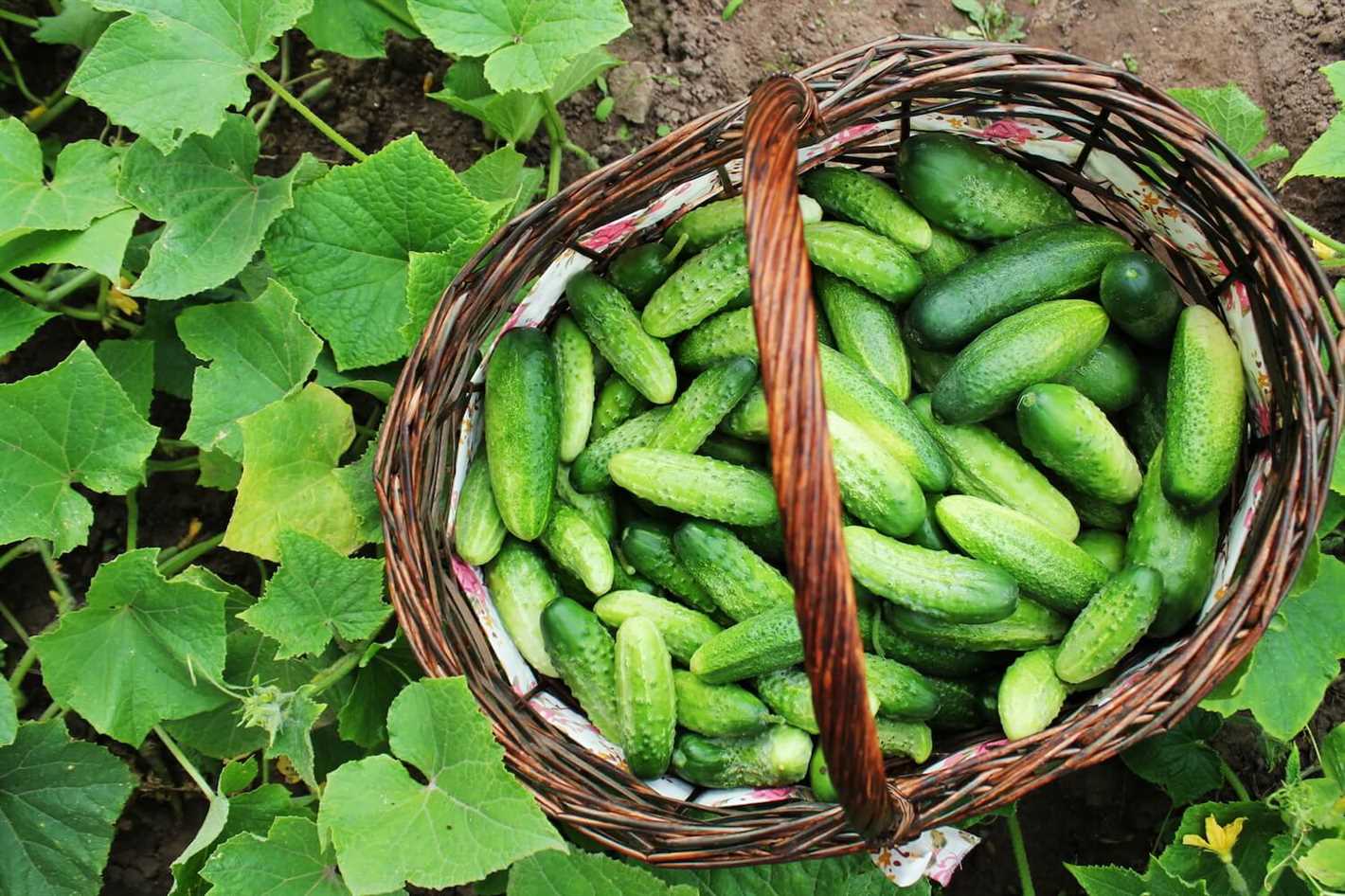
Combine the creaminess of avocado with the crunch of cucumbers in a refreshing salad. Slice cucumbers and avocado into bite-sized pieces and toss them with a dressing made with olive oil, lemon juice, salt, and pepper. Add some chopped red onions and cherry tomatoes for extra color and flavor.
| Recipe | Ingredients | Instructions |
|---|---|---|
| Cucumber Salad |
|
|
| Cucumber Salsa |
|
|
| Cucumber Sandwiches |
|
|
| Pickled Cucumbers |
|
|
| Cucumber Smoothie |
|
|
| Cucumber and Avocado Salad |
|
|
“Question-Answer”
What is the best way to extend cucumber fruiting through the autumn?
The best way to extend cucumber fruiting through the autumn is to provide them with a warm and sunny location. Cucumbers thrive in temperatures around 70-85°F (21-29°C), so make sure to choose a spot in your garden that receives at least 6-8 hours of direct sunlight each day. Additionally, providing a trellis or support structure for the cucumber vines will help to keep the fruit off the ground and promote air circulation, reducing the risk of disease and extending the fruiting season.
Can I grow cucumbers indoors during the autumn?
Yes, you can grow cucumbers indoors during the autumn. To successfully grow cucumbers indoors, you will need to provide them with a warm and sunny location, similar to what they would receive outdoors. Choose a spot near a south-facing window that receives at least 6-8 hours of direct sunlight each day, or consider using artificial grow lights if natural light is limited. Additionally, make sure to provide the cucumbers with support, such as a trellis or stakes, to keep the vines upright and promote air circulation.
What are some common problems that can prevent cucumber fruiting in the autumn?
There are several common problems that can prevent cucumber fruiting in the autumn. One common issue is lack of pollination, which can occur when there are not enough pollinators, such as bees, in the area. To encourage pollination, you can hand-pollinate the flowers using a small brush or by gently shaking the plants. Another problem is inadequate sunlight. Cucumbers require at least 6-8 hours of direct sunlight each day to thrive and produce fruit. Finally, nutrient deficiencies, such as a lack of potassium or magnesium, can also inhibit cucumber fruiting. Make sure to provide your plants with a balanced fertilizer to ensure they receive all the nutrients they need.
How often should I water my cucumber plants in the autumn?
In the autumn, you should water your cucumber plants regularly to keep the soil consistently moist. Cucumbers have shallow roots, so they require frequent watering to prevent them from drying out. Aim to water the plants deeply, so that the moisture reaches the root zone. This may require watering every 1-2 days, depending on the weather and soil conditions. It is important to monitor the soil moisture and adjust your watering schedule as needed to prevent both overwatering and underwatering.
Is it possible to grow cucumbers from seeds in the autumn?
Yes, it is possible to grow cucumbers from seeds in the autumn. However, it is important to choose the right variety of cucumber that is suitable for cool weather and has a shorter maturity time. Look for varieties that are labeled as “cold-tolerant” or “fall cucumbers.” Additionally, consider starting the seeds indoors and transplanting the seedlings into the garden once the weather has warmed up. This will give the plants a head start and increase the chances of a successful harvest before the colder temperatures arrive.
What are some tips for maximizing cucumber fruiting in the autumn?
To maximize cucumber fruiting in the autumn, there are several tips you can follow. First, choose the right variety of cucumber that is suitable for cool weather and has a shorter maturity time. Look for varieties that are labeled as “cold-tolerant” or “fall cucumbers.” Second, provide the plants with a warm and sunny location that receives at least 6-8 hours of direct sunlight each day. Third, provide support, such as a trellis or stakes, to keep the vines upright and promote air circulation. Fourth, hand-pollinate the flowers if there are not enough pollinators in the area. Finally, monitor the soil moisture and water the plants regularly to keep the soil consistently moist.







